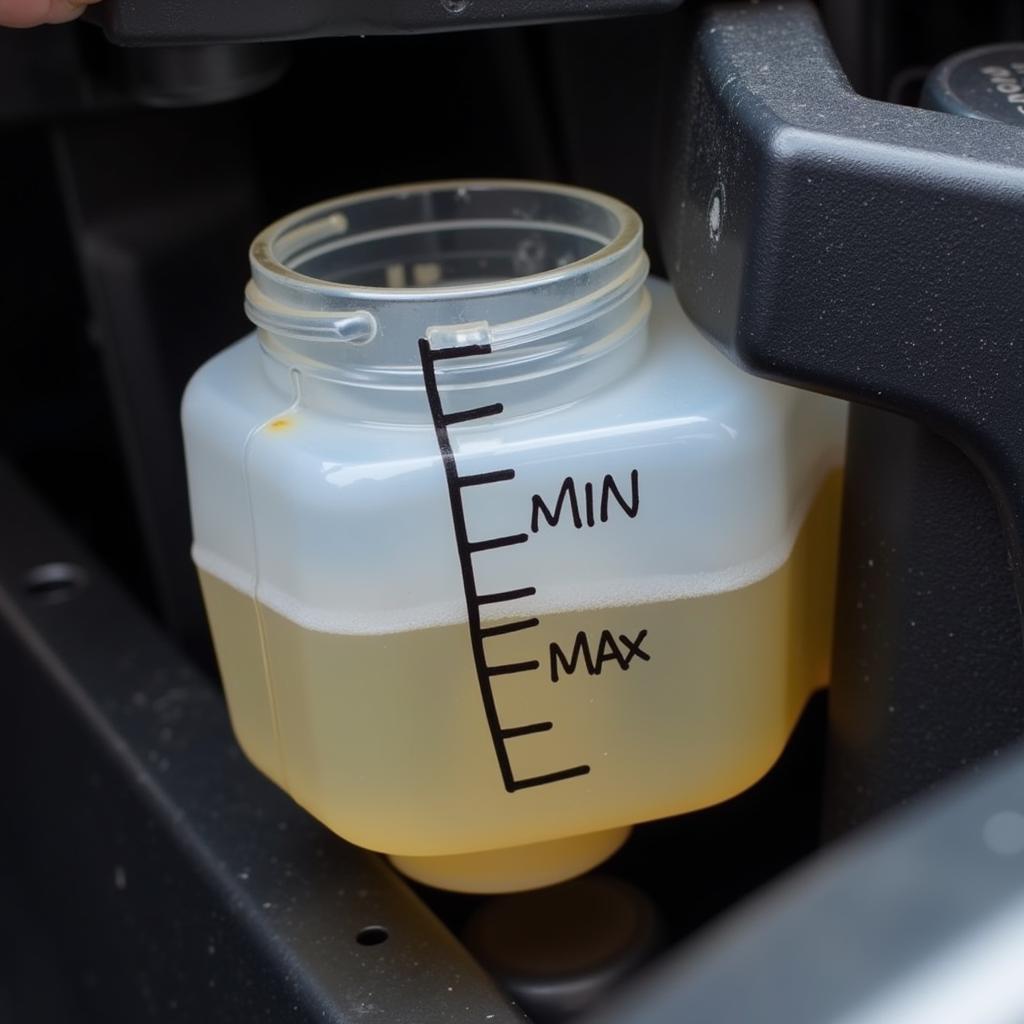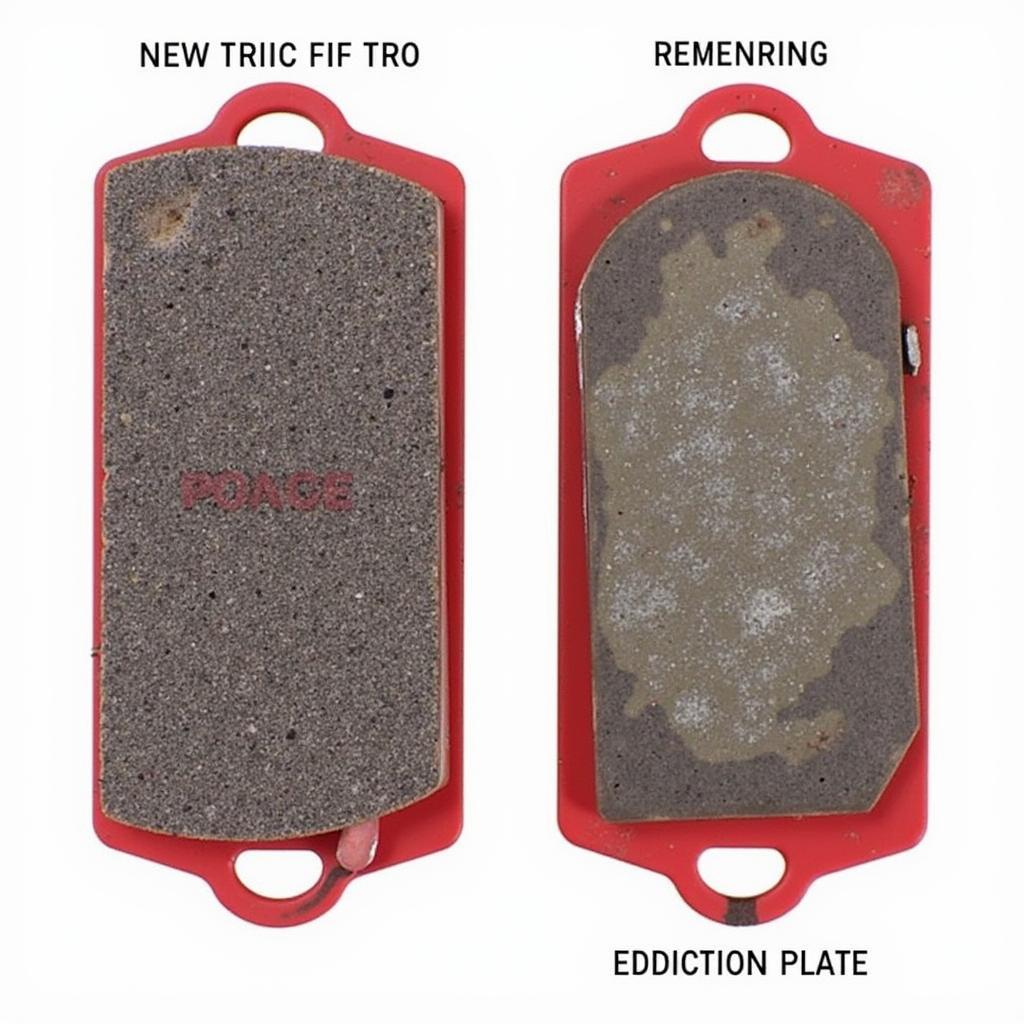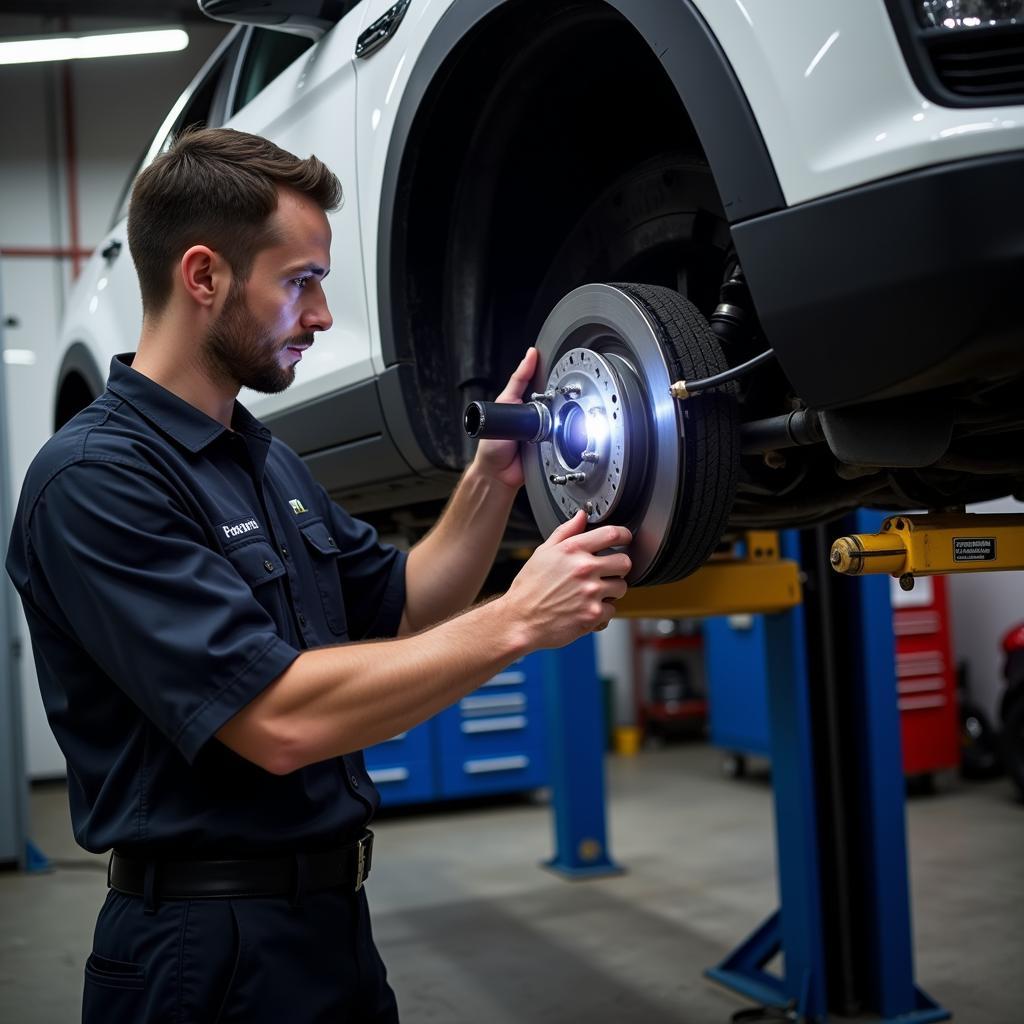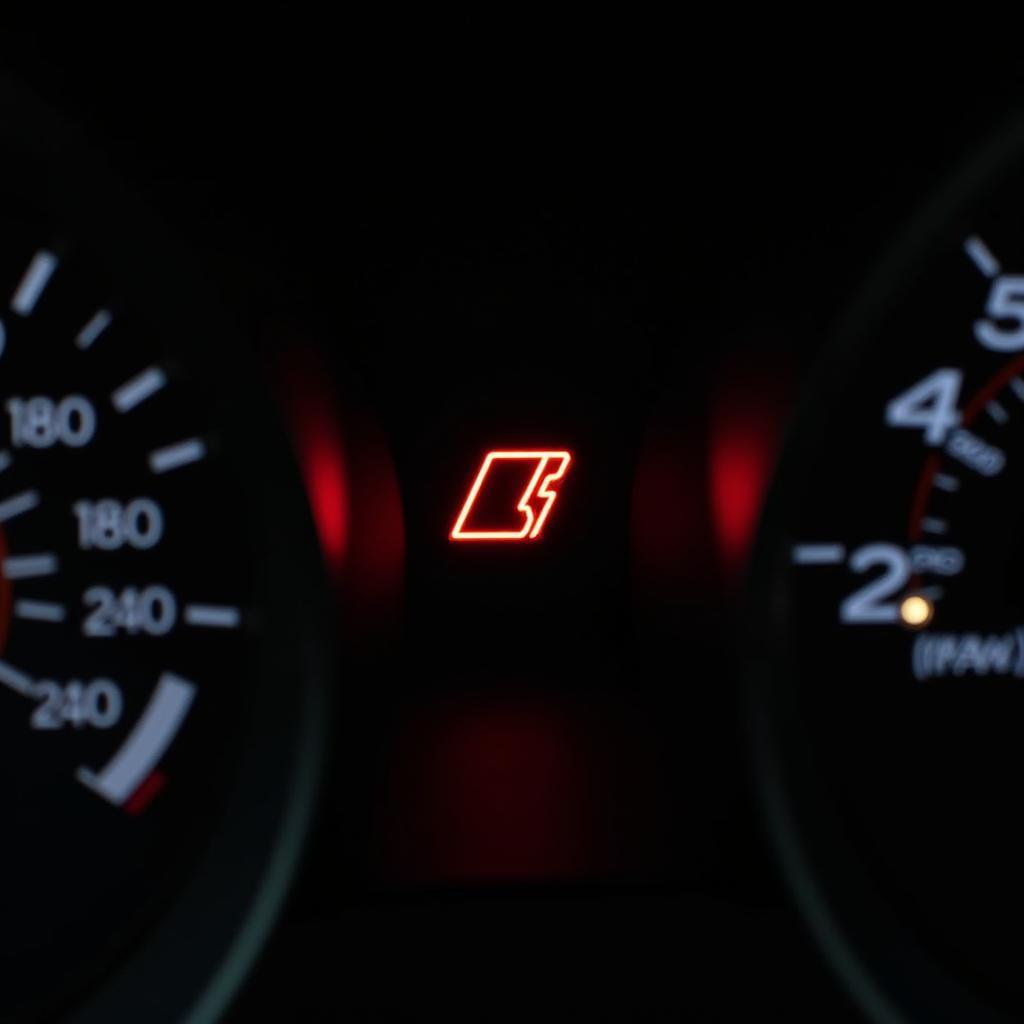The brake system warning light is one of the most important indicators on your car’s dashboard. When it illuminates, it signals a potential issue with your vehicle’s braking system that requires immediate attention. Ignoring this warning light can compromise your safety and lead to more severe damage. This comprehensive guide will help you understand the different reasons your brake system warning light might be on, what to do when it happens, and how to prevent future occurrences.
Common Causes of a Brake System Warning Light
While the brake system warning light’s primary function is to alert you about braking system issues, it can be triggered by a range of problems, from minor to serious. Here are some of the most common culprits:
1. Low Brake Fluid Level
One of the most common reasons for the brake system warning light to activate is low brake fluid. Your car’s braking system relies on hydraulic pressure to function correctly, and brake fluid is the lifeblood of this system. A leak in the brake lines, worn-out brake pads, or a malfunctioning brake master cylinder can all contribute to a drop in brake fluid levels.
 Brake Fluid Reservoir with Low Level
Brake Fluid Reservoir with Low Level
2. Worn Brake Pads
Your brake pads are designed to wear down over time. When they become too thin, a sensor within the brake pad will make contact with the brake rotor, triggering the brake system warning light. This is a crucial safety feature that reminds you to replace your brake pads before they wear down completely, potentially causing damage to the rotors and compromising braking performance.
 Comparison of New and Worn Brake Pads
Comparison of New and Worn Brake Pads
3. Malfunctioning ABS System
Modern vehicles are equipped with an Anti-lock Braking System (ABS), which helps prevent wheels from locking up during hard braking, thereby maintaining steering control. If the ABS system encounters a problem, such as a faulty sensor or a malfunctioning control module, the brake system warning light will often illuminate alongside the dedicated ABS warning light.
4. Issues with the Brake Master Cylinder
The brake master cylinder is a crucial component of your braking system. It converts the force applied to the brake pedal into hydraulic pressure, which is then transmitted to the brakes at each wheel. If the master cylinder develops a leak or experiences internal problems, it can lead to a loss of brake pressure and trigger the warning light.
5. Electrical Faults
While less common, electrical issues can also activate the brake system warning light. A short circuit, a blown fuse, or a faulty brake light switch can all disrupt the electrical signals within the braking system, causing the warning light to turn on.
What to Do When the Brake System Warning Light Comes On
If your brake system warning light illuminates while driving, it’s crucial to react promptly and cautiously to ensure your safety and the safety of others on the road. Here’s a step-by-step guide on what to do:
- Don’t panic: While the warning light indicates a potential issue with your brakes, it doesn’t necessarily mean you’re about to lose braking power completely.
- Assess your surroundings: Safely pull over to the side of the road as soon as possible. Avoid sudden maneuvers or hard braking.
- Check your brake fluid level: With the engine off and the parking brake engaged, carefully open the hood and locate the brake fluid reservoir. Refer to your owner’s manual if you’re unsure of its location.
- Top up brake fluid if necessary: If the brake fluid level is low, carefully add the appropriate type of brake fluid until it reaches the “MAX” line on the reservoir. Be cautious not to overfill.
- Test your brakes: After topping up the brake fluid or if you’re uncomfortable checking it yourself, start the engine and gently test your brakes while still parked. If the brake pedal feels spongy, sinks to the floor, or you hear unusual noises, do not attempt to drive further.
- Call for professional assistance: Regardless of whether you were able to address the issue with a simple brake fluid top-up, it’s essential to have your braking system inspected by a qualified mechanic as soon as possible.
 Mechanic Inspecting Car's Brake System
Mechanic Inspecting Car's Brake System
Preventing Brake System Issues
Taking proactive measures to maintain your vehicle’s braking system is crucial for preventing unexpected failures and ensuring optimal braking performance. Here are some essential tips:
- Regular brake inspections: Have your brakes inspected by a qualified mechanic at least once a year or every 12,000 miles, whichever comes first.
- Timely brake pad replacement: Replace your brake pads as soon as they reach the minimum thickness specified by the manufacturer.
- Quality brake fluid: Use high-quality brake fluid that meets the specifications outlined in your owner’s manual and ensure it’s changed according to the manufacturer’s recommendations.
- Pay attention to warning signs: Never ignore unusual noises, vibrations, or changes in brake pedal feel. Address these issues promptly to prevent further damage.
Conclusion
The brake system warning light is a crucial safety feature in your vehicle. Understanding its meaning and reacting promptly can be the difference between a minor inconvenience and a potentially dangerous situation. Remember, a well-maintained braking system is essential for your safety and the safety of others on the road. Don’t hesitate to seek professional help if you encounter any issues with your brakes.

